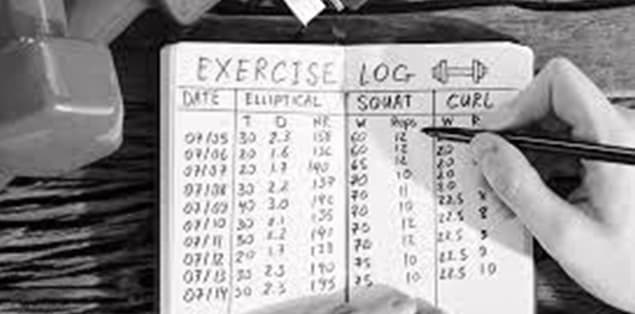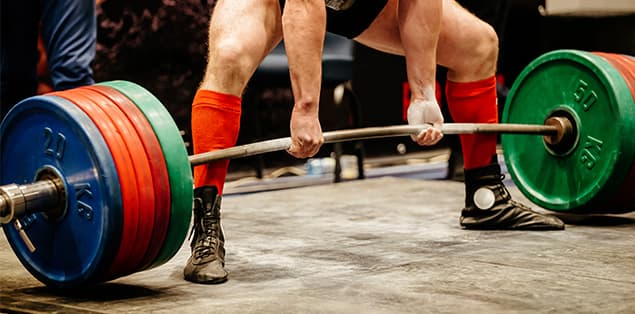So, what does PR mean in gym? Remembering all the terminologies and abbreviations used in the fitness industry can be challenging. For example, “What is a PR?” is a question we frequently hear. In the gym, a PR is an abbreviation for personal record. It could be the maximum weight lifted with a specific exercise or the most repetitions with a particular weight. PR is the motivation that can push you to new heights, regardless of whether you’re a professional powerlifter, a fitness freak, a bodybuilder, or just someone who wants to become fit.
Your top priority as a weightlifter is to improve and strengthen your basic lift. And to achieve it, you must work beyond your physical limitations at the gym.
PR is one method of evaluating your strength and health. You can use this figure to monitor your development and create more potent and effective workout plans.
What does a PR at the gym mean, and how do you determine your PR? And how can you improve your PR?
Keep reading to know the answers to these questions!
What Does PR Mean in Gym?

No matter the exercise, a PR is still essential in the gym. A personal record or any other fitness activity in the gym is a PR. The maximum weight you have ever lifted concerning a particular criterion is known as your PR. However, it can also relate to muscular workouts like biceps curls, jump distance, running, or even cardio exercises.
Let’s look at some examples of how to employ PR in the gym.
1) You’ve only ever performed actual one rep max of a squat with a weight of 30 kg. A new PR would be achieved when you could complete a rep at 40 kg.
2) You can bench press 35 kg for five repetitions; a new PR would be set a month later when you can perform six repetitions at 35 kg.
What Is Deadlift PR?

The term “Deadlift” refers to a movement that simultaneously works for several significant muscle groups. It can be fantastic for increasing lean muscle growth, strength, and power. It is also great for raising heart rate and can be perfect for weight circuits with a cardiovascular focus because they activate numerous body parts.
PR in deadlift means your records in the deadlift exercises.
Why Is It Important to Hit New PRs?
PRs are essential because they keep your training on track. It would be best if you kept pushing yourself beyond what is comfortable; your strength will stagnate. Mentally stressful stagnation can cause training slips or discouragement.
Aiming for new PRs is entirely in line with progressive overload, the fundamental idea behind muscular growth. You’ll feel more confident after setting a new personal best; it’s like a lifter’s high. So please try it for yourself rather than accepting our word for it.
How to Track PRs?

You should warm up properly, be physically and psychologically prepared, and be aware of the PR you’re attempting to set before tracking your PR in any exercise.
You should warm up if the PR is set on low rep ranges or just one rep so that your body and nervous system are prepared to lift a large load. Avoid switching from a set of 2 reps to a 6 reps attempt.
Take your time and allow your muscles to warm up before the test. If you’re trying to lift a volume you haven’t accomplished previously, have a spotter nearby to support you. In some workouts, you can also employ safety hooks or catches to serve as a fail-safe in case you cannot lift the weight. Another source of inspiration and support could come from a training partner.
Your warm-ups don’t need to be as lengthy and drawn out if you’re trying to break a personal record in the hypertrophy spot of 6–12 reps because the amount of weight you’ll be lifting won’t have as much of an effect on your muscles, joints, and ligaments. Instead, perform several warm-up sets of the activity you’re working on after a 5–10 minute dynamic warm-up. When you’re feeling loose and prepared to move forward, do it! Additionally, since you ought to be pushing yourself to the point of near failure, it’s crucial to be secure and have a supervisor to assist you.
What Does RM Stand for in Fitness?

RM, or repetition maximum, refers to fitness or exercise. It is the most weight you can lift for a specific number of exercise motions. For example, a 10 RM instance would be the most significant weight you could lift for 10 consecutive repetitions of a given exercise.
The 1RM, or 1 Rep-Max, is the PR that most weightlifters aim for. It is the max weight that one can lift at one moment during a specific exercise.
1RM and PR are two distinct concepts. There are instances when they will be the same number, but this usually only happens for brief periods.
1RM is a measurement that fluctuates up and down like your body weight or temperature, whereas your PR is your statistically best performance.
Your 1RM should be the primary reference point for your training session if it is designed around your strength. It is your present strong point. Don’t use a one-year-old PR as the basis for your training weights.
What Does RPE Mean in Lifting?

Weight lifters can use the RPE scale to measure the subjective intensity of a lift, which they then often use to guide the rest of their training session.
Based on a percentage of your one-rep maximum, you can choose your weights during training in one of the most popular ways. For example, whenever you see a percentage hovering around a rep scheme, such as 85%, in your training, you know the session is percentage-based.
Your RPE will, however, occasionally appear as a whole number between one and ten. That figure suggests that you should lift according to how the weight feels rather than fill the plates with a predetermined weight. In addition, it increases your training control and helps you become more aware of your mental training.
What Does IRM Stand for in Fitness?

IRM means Incomplete Rest Method in fitness.
The incomplete rest method (IRM) is a very effective way to burn more fat for energy while also getting your muscles to take up glucose (carbs). Because it prevents muscular damage, it also has the added benefit of being easier to recover from, so you may work out more frequently.
As a result, you can exercise every muscle as frequently as every third day, maintaining your muscles’ glucose sensitivity and allowing you to burn fat for longer.
You’ll likely be glad to learn that this program’s nutritional requirements call for you to consume sufficient carbohydrates to support training and maintain your muscles’ stores of glycogen (stored carbohydrates) complete. However, a low-carb diet is not advised because this is necessary to benefit from the training.
Gym PR vs. Competition PR
In the gym, poor form or incomplete reps are acceptable. But there are restrictions on what counts as a repetition in powerlifting events for the squat, bench press, and deadlift.
For instance, according to the regulations of the bench press competition, you must hold the bar on your chest until the judge signals “press.” Instead, the lift becomes more difficult due to the delay, which removes momentum.
The rules for doing the squat and deadlift exercises are similar. Due to tight discipline, a competition PR is typically lower than a gym PR.
Final Words
What does a new personal record (PR) signify in the gym? First, it suggests you’ve made some progress toward growing stronger. Maintaining a consistent focus on setting new PRs gives your effort a sense of direction.
Tracking your workout progress and personal records will keep you on track and show you where you’re excelling or falling short. For example, you can use Excel spreadsheets, pen, paper, or even one of the numerous available APPS to keep track of your PRs.
